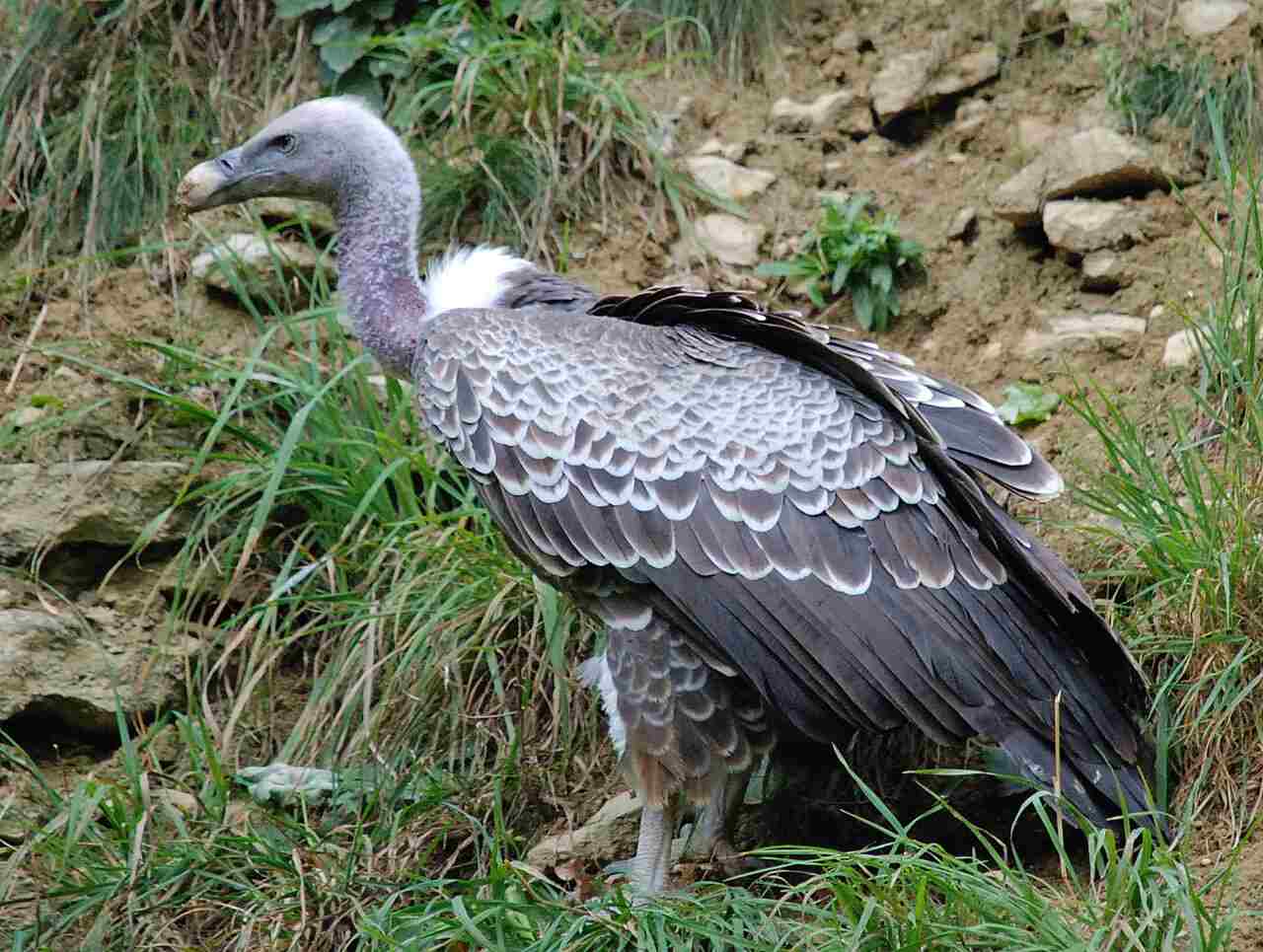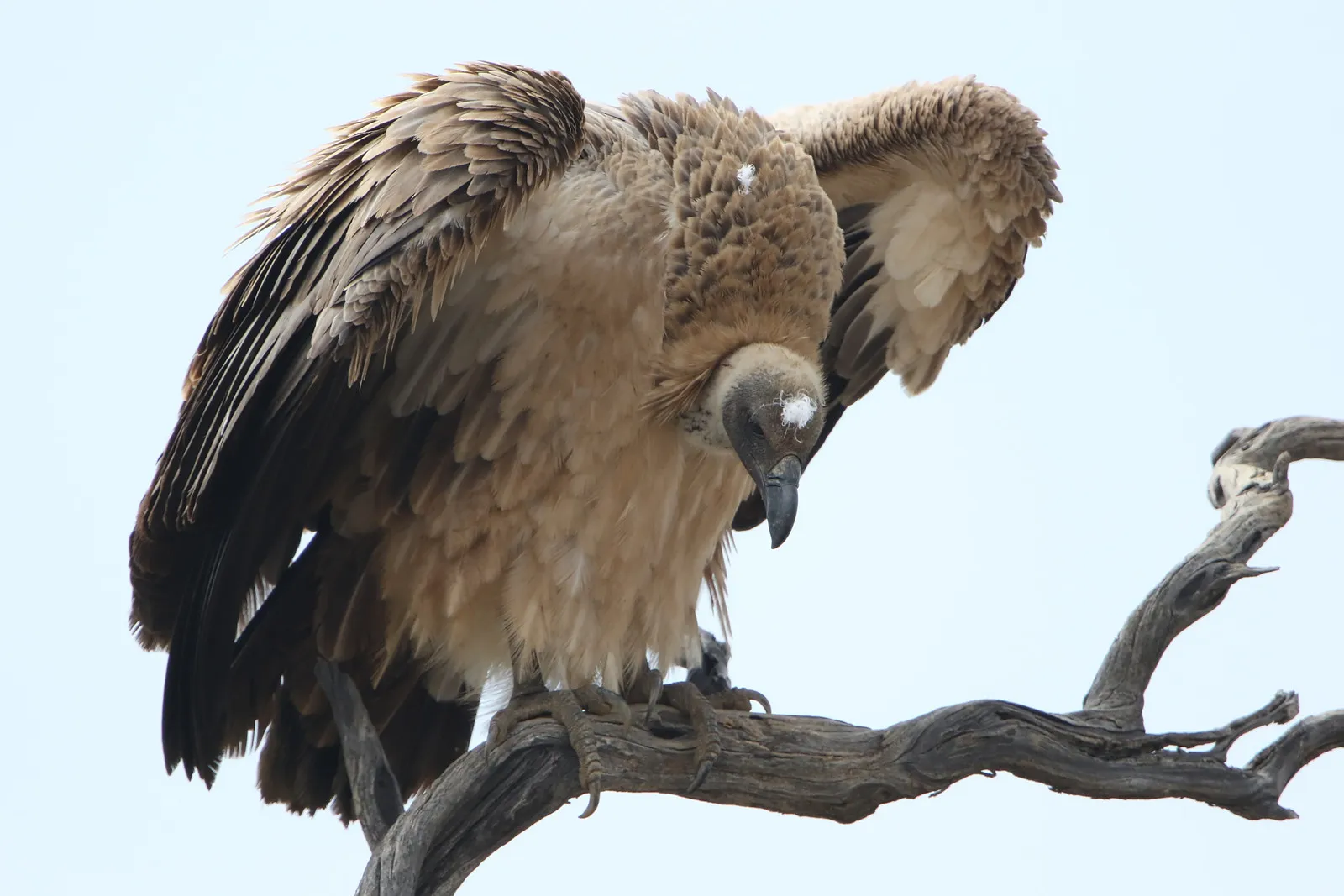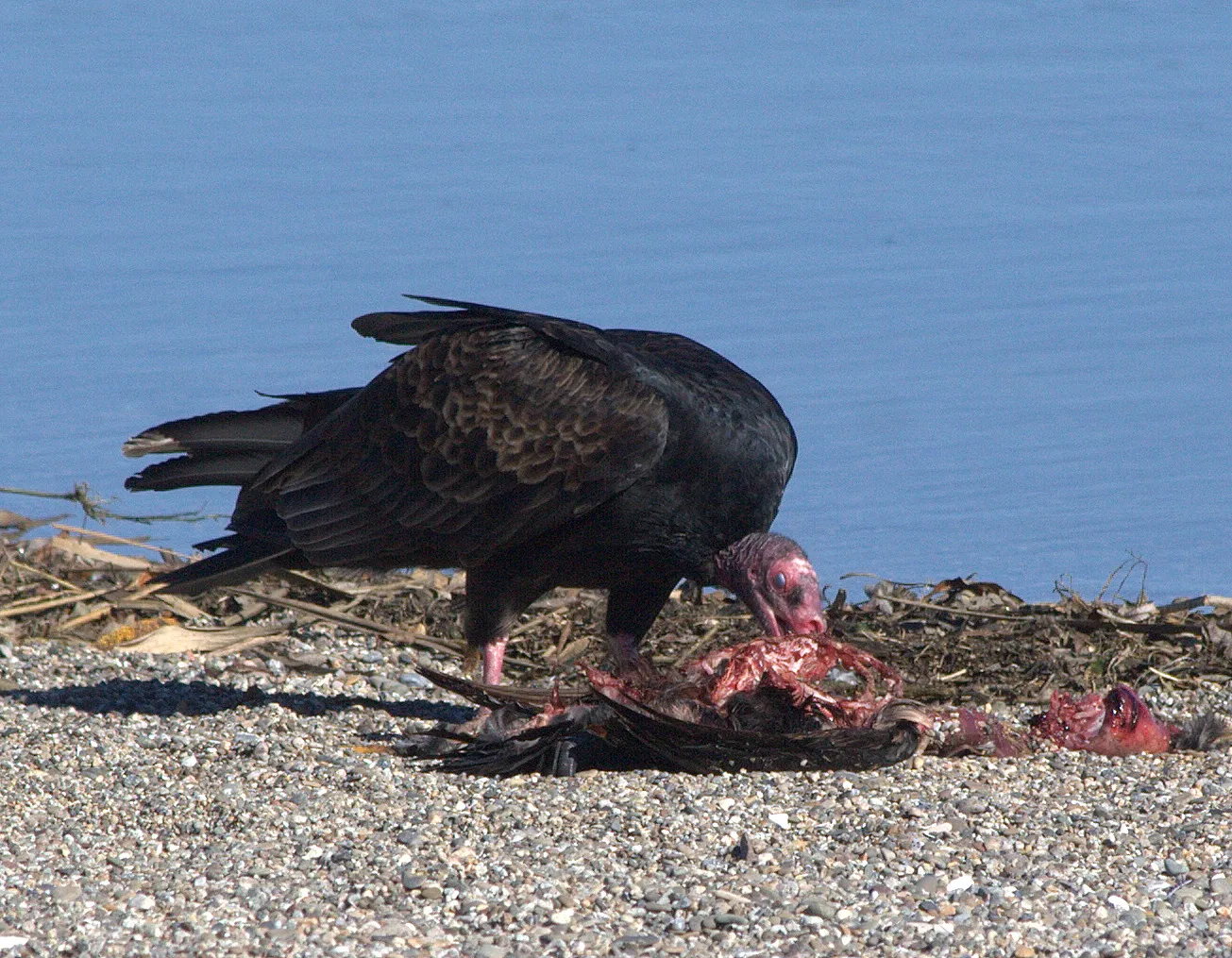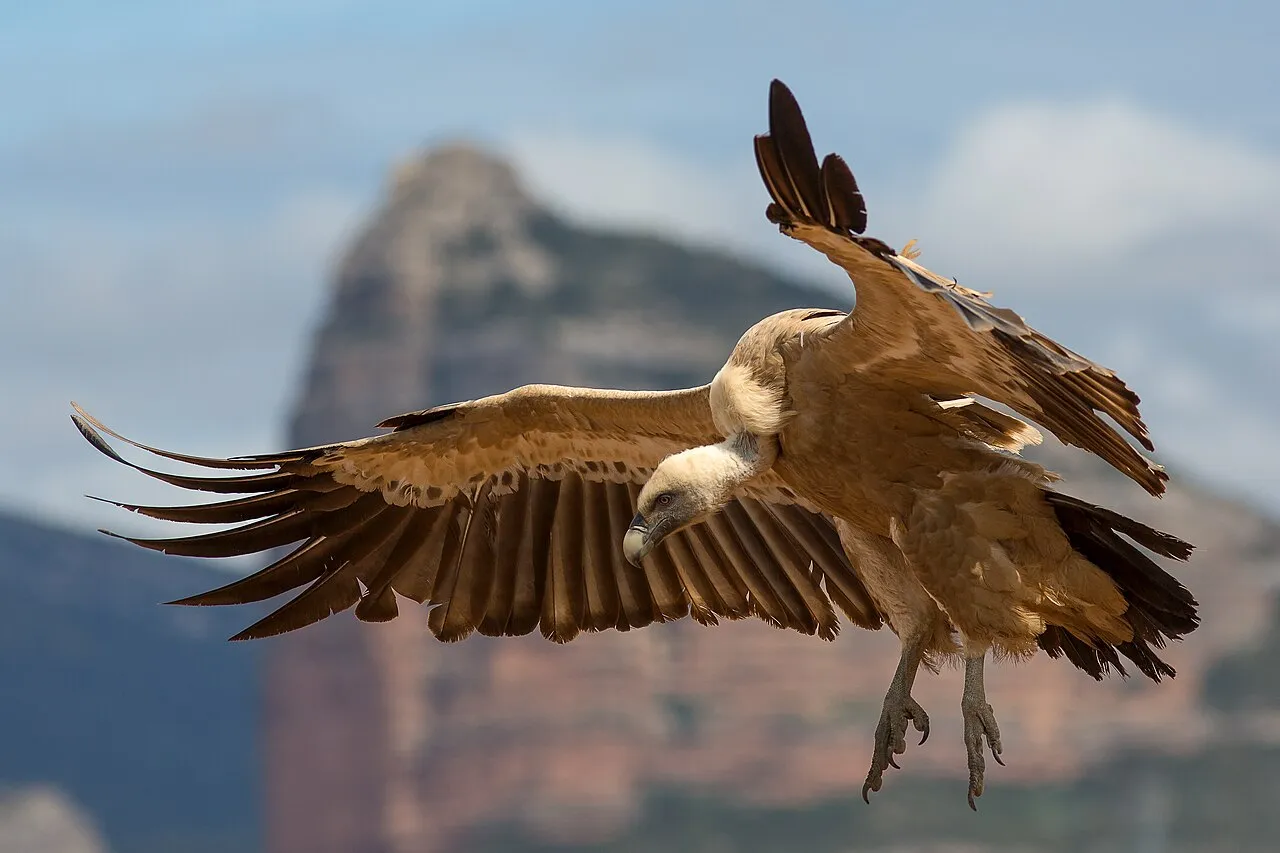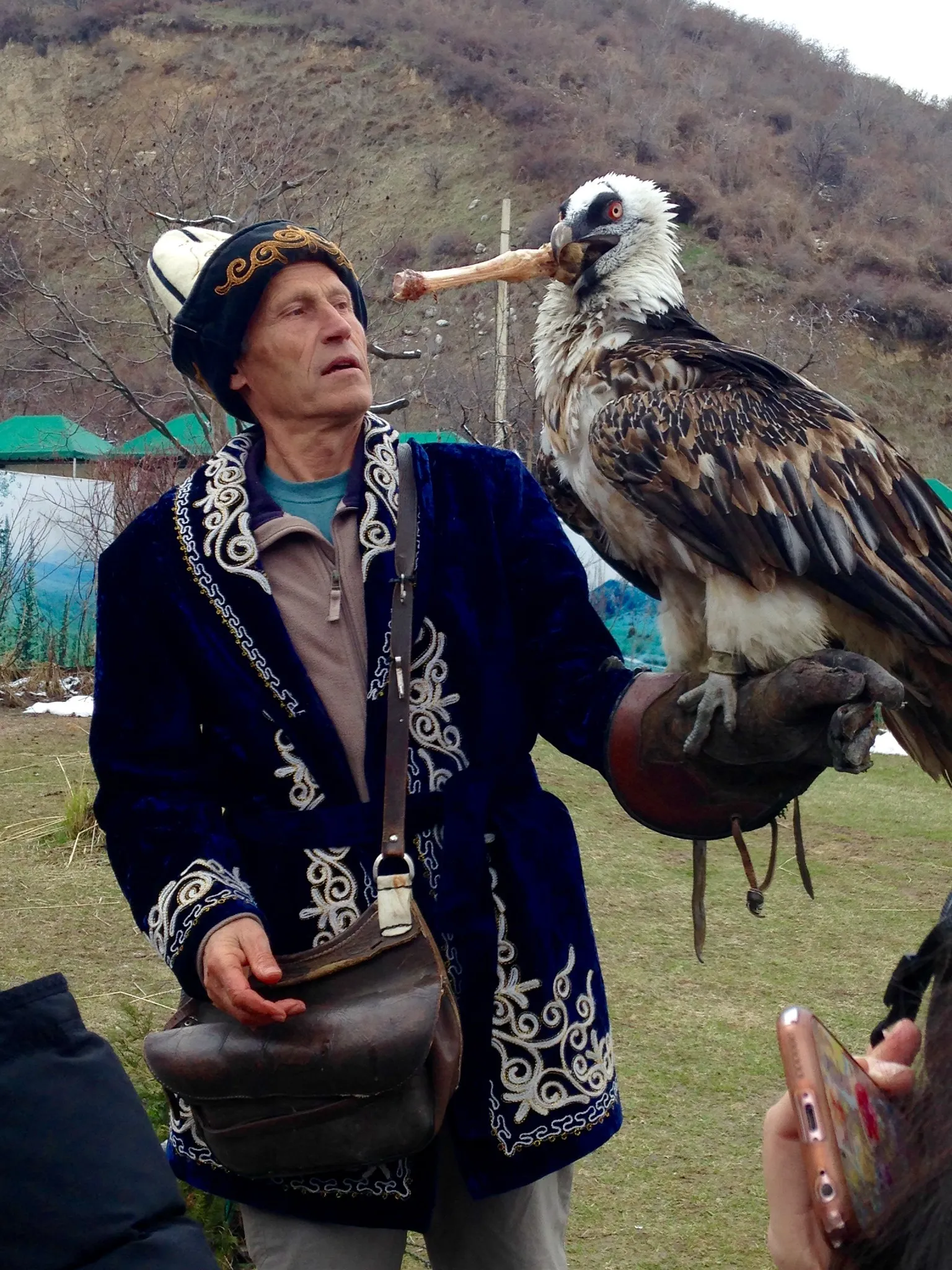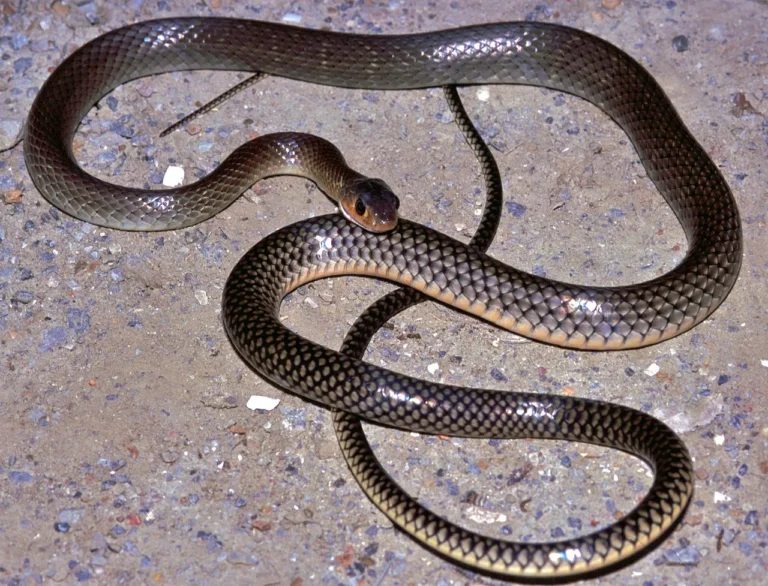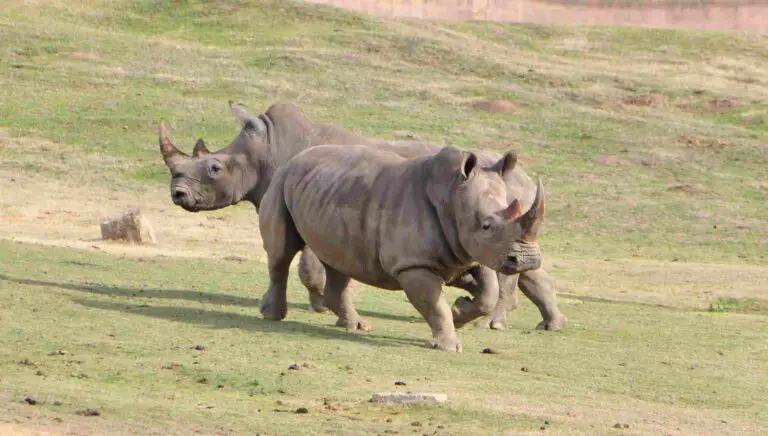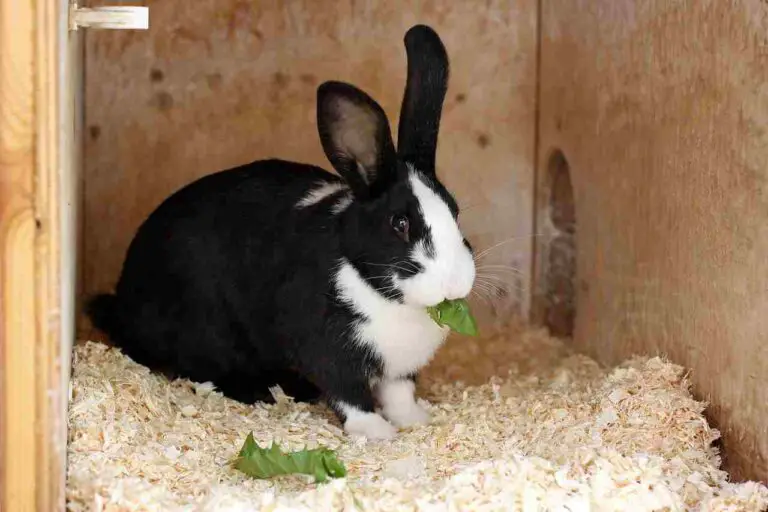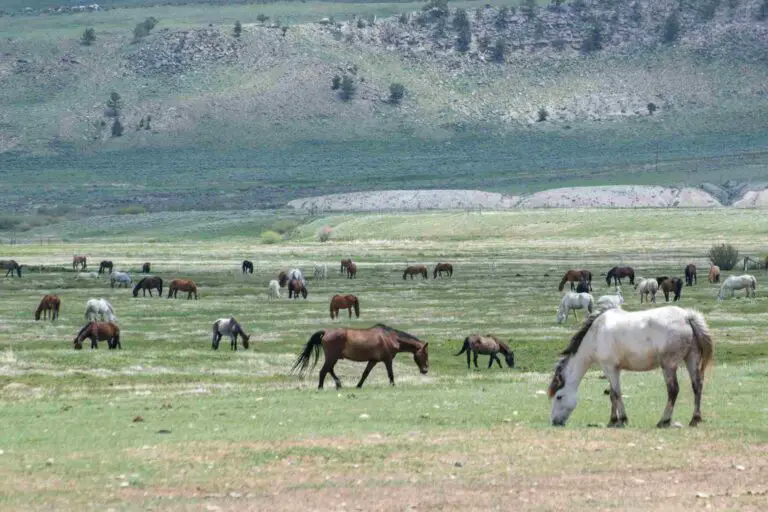African Vultures Facts, Characteristics, Full Description
African vultures are large birds and essential scavengers with unique adaptations for carrion consumption. They play a crucial role in maintaining ecosystem health by preventing disease spread and promoting ecological balance. However, they face numerous threats, including habitat loss and persecution, necessitating urgent conservation action to safeguard their populations and preserve their vital ecological role.
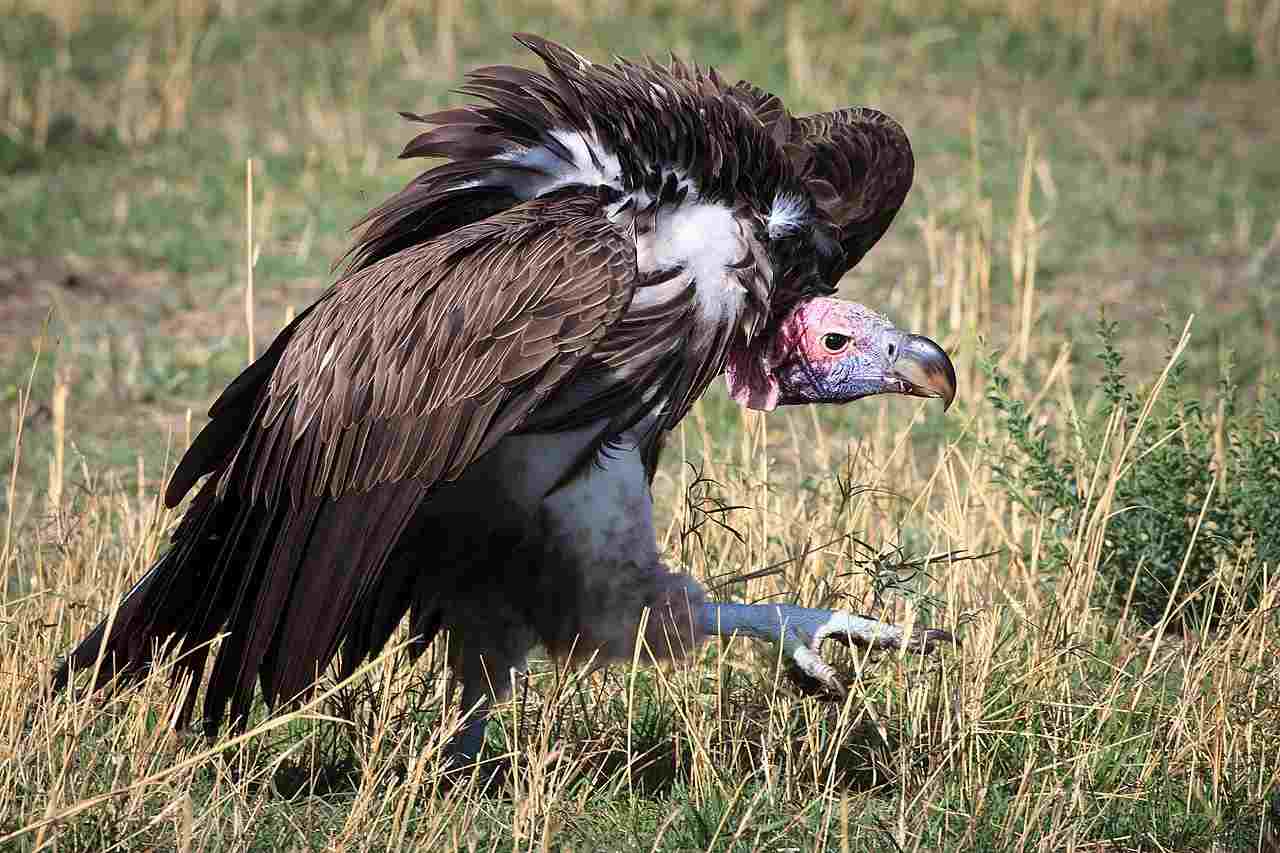
*Facts About African Vultures
- African vultures belong to the Animalia kingdom, Chordata phylum, Aves class, Accipitriformes order, and Accipitridae family.
- They vary in size, with wingspans ranging from 1.8 to 3 meters and weights from 2 to 10 kilograms.
- Their distinctive features include dark plumage, featherless heads, hooked beaks, and grasping talons.
- With sharp, hooked beaks and moderate bite force, they efficiently consume carrion.
- African vultures primarily feed on carrion, playing a crucial role in preventing disease spread and maintaining ecosystem balance.
- They exhibit cooperative foraging behavior and rely on social cues to find food.
- Generally silent, they use vocalizations for social interactions and maintaining dominance.
- African vultures inhabit various habitats like savannas, grasslands, and woodlands, relying on open landscapes for foraging.
- Distributed across sub-Saharan Africa, they face conservation challenges due to habitat loss and persecution.
- They form monogamous pairs and lay one to two eggs per clutch.
- Their lifespan varies by species and environmental factors, contributing to population stability.
- Specialized adaptations like keen eyesight and featherless heads enable efficient scavenging and disease control.
- Many African vulture species are facing significant population declines, emphasizing the need for urgent conservation action.
- Not suitable for domestication or as pets, their preservation in their natural habitat is crucial for ecosystem health and balance.
| Criteria | Summary |
| Scientific Classification |
African vultures belong to the Animalia kingdom, Chordata phylum, Aves class, Accipitriformes order, and Accipitridae family. Genus varies among species, such as Gyps for many. Species include Gyps africanus, Gyps rueppelli, Gyps coprotheres, etc.
|
| Subspecies |
Variability within vulture populations reflects adaptability and genetic diversity, aiding conservation targeting efforts.
|
| Size and Weight |
Wingspans range from 1.8 to 3 meters, weights from 2 to 10 kilograms, enabling efficient soaring flight and scavenging.
|
| Appearance and Identification |
Distinctive features like dark plumage, featherless heads, hooked beaks, and grasping talons aid easy identification.
|
| Dentition and Bite Force |
Sharp, hooked beaks and moderate bite force facilitate efficient carrion consumption and hide penetration.
|
| Diet |
Obligate scavengers feeding primarily on carrion, crucial for disease prevention and ecosystem balance.
|
| Behavior |
Cooperative foraging behavior and social cues maximize feeding opportunities and reduce scavenger competition.
|
| Sounds/Vocalization |
Generally silent except during social interactions, with vocalizations aiding in maintaining dominance.
|
| Habitat |
Inhabit various habitats like savannas, grasslands, and woodlands, relying on open landscapes for foraging.
|
| Geographic Range and Distribution |
Distributed across sub-Saharan Africa, with conservation efforts focusing on protecting varying ranges of species.
|
| Tracks |
Leave signs of activity at feeding and roosting sites, aiding in monitoring movements and ecosystem impact assessment.
|
| Reproduction |
Form monogamous pairs, laying one to two eggs per clutch, crucial for maintaining population growth.
|
| Lifespan |
Varies by species and environmental factors, with long lifespans contributing to population stability.
|
| Major Adaptations |
Keen eyesight, featherless heads, and specialized digestive systems enable efficient scavenging and disease control.
|
| Conservation Status |
Many species face significant declines, with conservation efforts urgently needed to protect populations.
|
| Domestication and Suitability as a Pet |
Not suitable for domestication or as pets, emphasizing the importance of preserving vultures in their natural habitat.
|
1. Scientific Classification:
Kingdom: Animalia
Phylum: Chordata
Class: Aves
Order: Accipitriformes
Family: Accipitridae
Genus: Gyps (for most African vulture species)
Species: Various, including Gyps africanus (White-backed Vulture), Gyps rueppelli (Rüppell’s Vulture), Gyps coprotheres (Cape Vulture), etc.
2. Subspecies:
Details: Various African vulture species may have different subspecies, each adapted to specific regional habitats and environmental conditions.
Importance: Subspecies variation reflects the adaptability and genetic diversity within vulture populations, contributing to their resilience in the face of environmental changes.
Ecological Implications: Understanding subspecies distribution and behavior aids conservation efforts by targeting specific populations for protection and management.
3. Size and Weight:
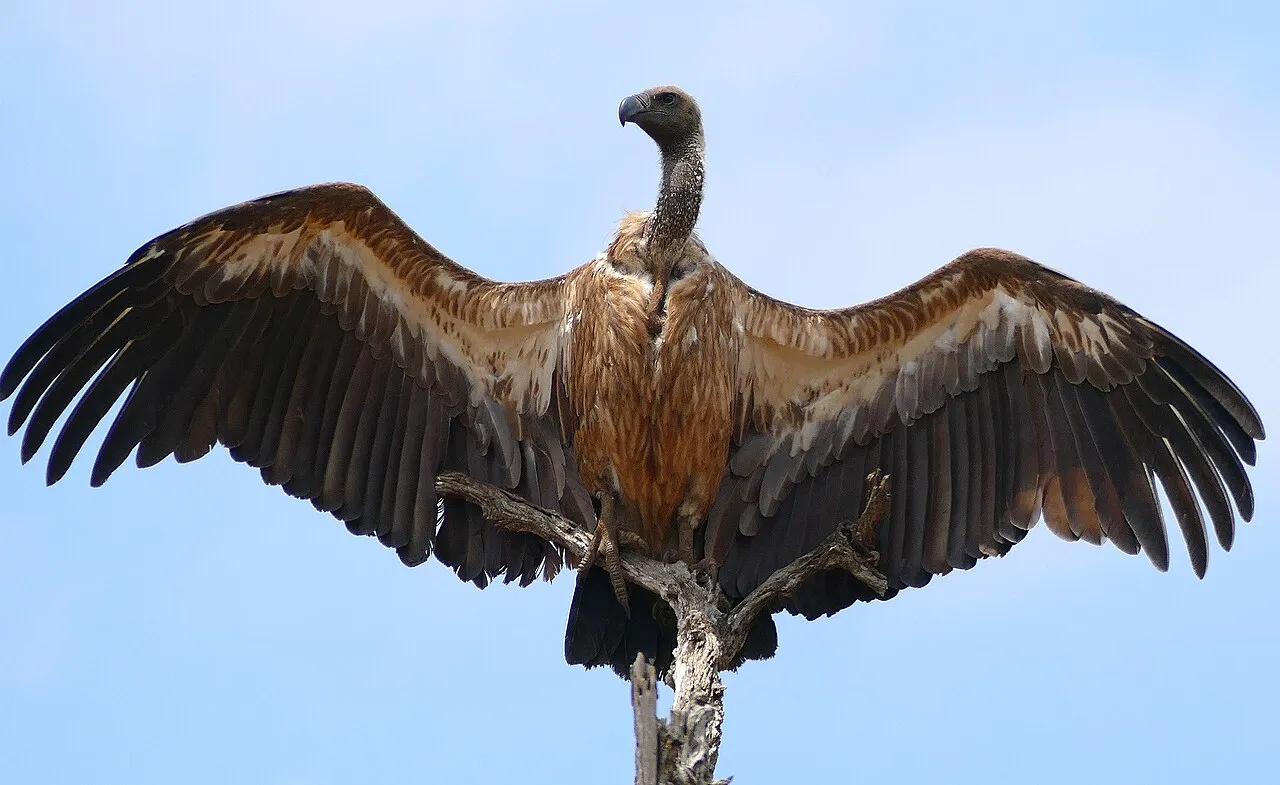
Details: African vultures vary in size, with wingspans ranging from 1.8 to 3 meters (6 to 10 feet) and weights between 2 to 10 kilograms (4.4 to 22 pounds), depending on the species.
Importance: Their large size and wingspan enable them to efficiently soar and locate carrion over vast distances, making them effective scavengers.
Ecological Implications: Vultures play a crucial role in ecosystems by consuming carrion, which helps prevent the spread of disease and maintains a balance in the food chain.
4. Appearance and Identification:
Details: African vultures typically have dark plumage, featherless heads and necks, hooked beaks, and strong, grasping talons.
Importance: Their distinctive appearance aids in easy identification and distinguishes them from other bird species in their habitat.
Ecological Implications: Recognizing vultures facilitates research and monitoring efforts, which are essential for assessing population trends and implementing conservation measures.
5. Dentition and Bite Force:
Details: African vultures have sharp, hooked beaks adapted for tearing flesh, but they lack strong jaw muscles and powerful bites compared to predators like lions or hyenas.
Importance: While vultures primarily rely on their beaks for feeding, their bite force is sufficient for breaking through tough hides and accessing carrion.
Ecological Implications: Vultures’ feeding behavior, characterized by scavenging on carrion, reduces the risk of disease transmission by rapidly consuming animal carcasses before pathogens can proliferate, thereby benefiting ecosystem health.
6. Diet:
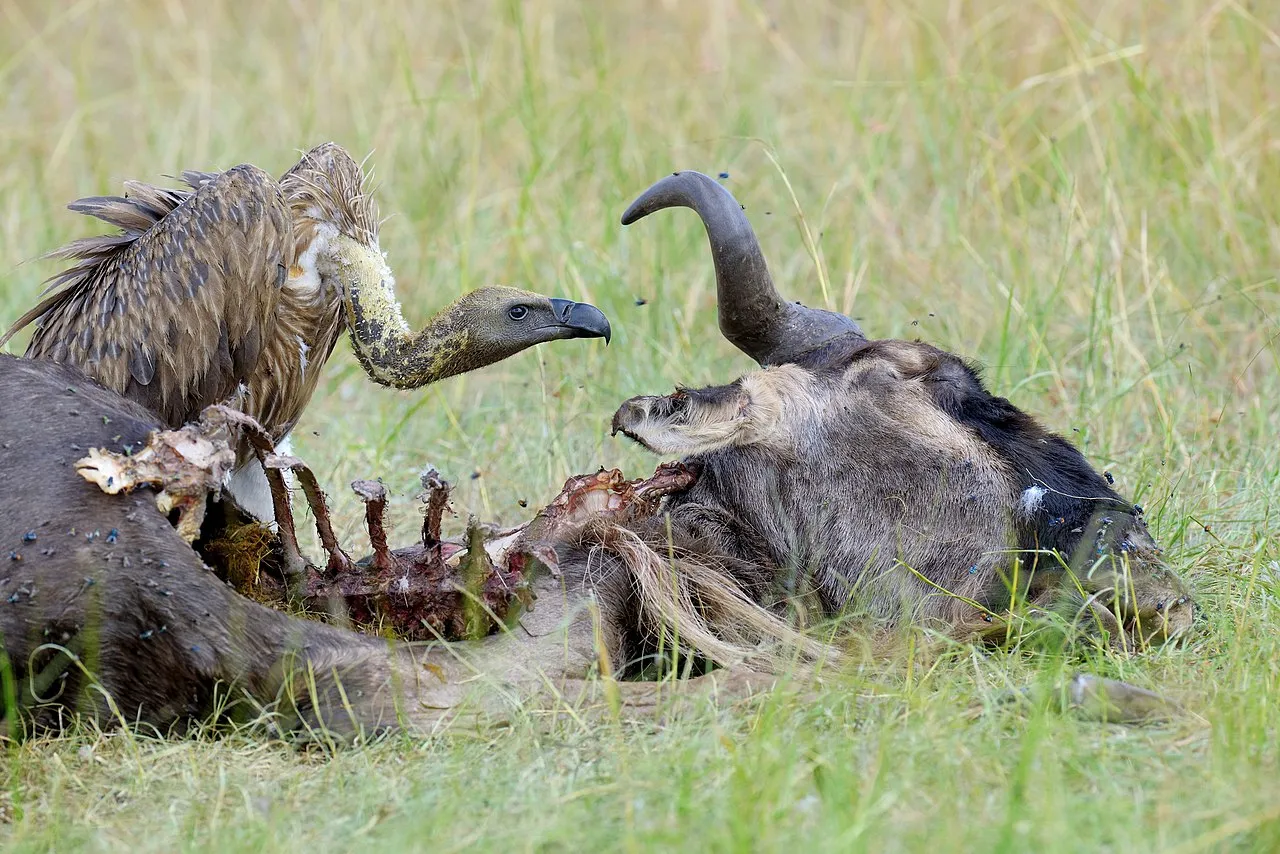
Details: African vultures are obligate scavengers, primarily feeding on carrion from large mammal carcasses.
Importance: Their diet helps prevent the spread of disease by quickly removing decaying animal remains from the environment.
Ecological Implications: Vultures play a vital role in nutrient cycling and ecosystem health by efficiently recycling organic matter and preventing the buildup of carcasses, which could attract pests and spread pathogens.
7. Behavior:
Details: African vultures exhibit soaring flight patterns, often circling high in the sky to locate carrion. They rely on social cues from other vultures to find food.
Importance: Cooperative foraging behavior allows vultures to efficiently locate and access carrion, maximizing their feeding opportunities.
Ecological Implications: By scavenging on carrion, vultures help maintain the balance of predator-prey dynamics and reduce competition among scavenger species, thus contributing to ecosystem stability.
8. Sounds/Vocalization:
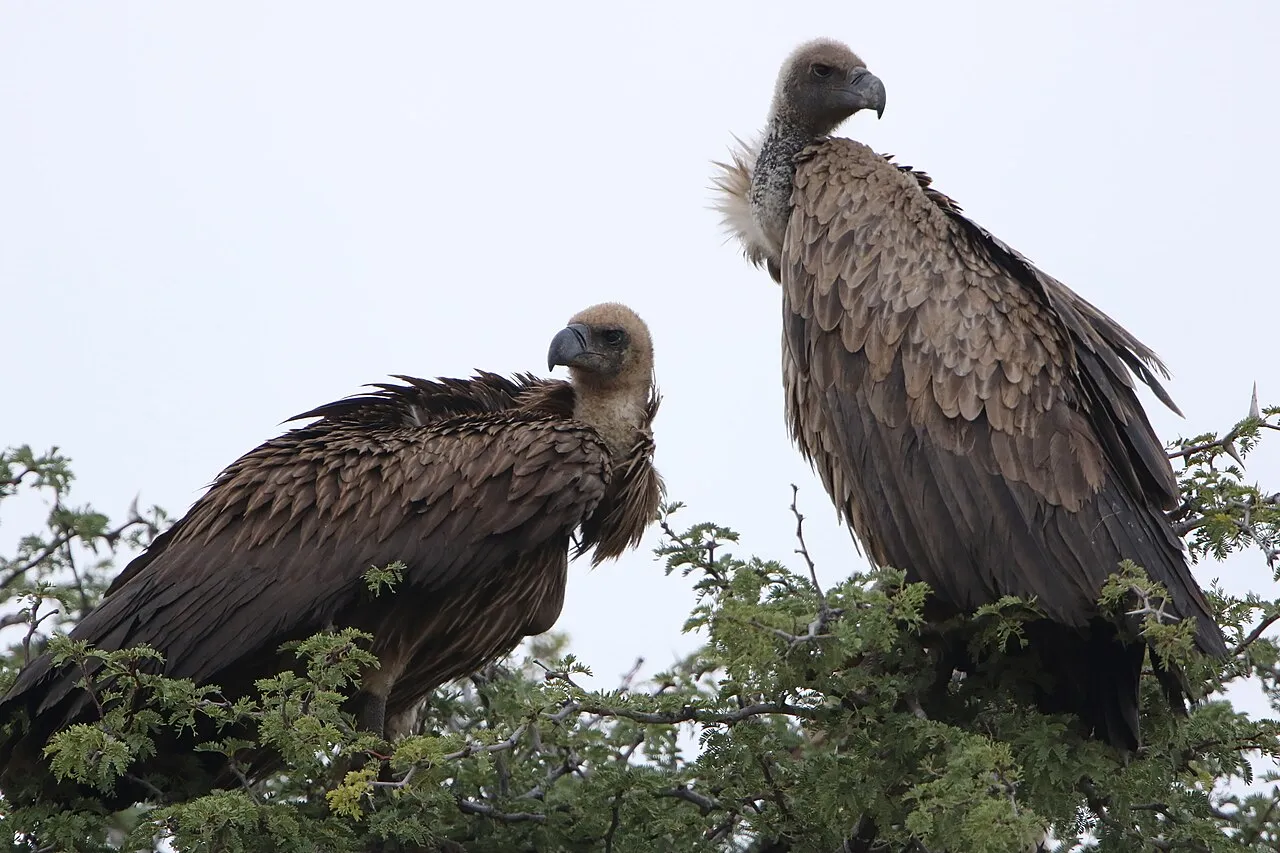
Details: African vultures are generally silent except during interactions at feeding sites or while communicating with their mates and offspring.
Importance: Vocalizations such as grunts, hisses, and squawks are used for social interactions and maintaining dominance hierarchies within vulture populations.
Ecological Implications: Understanding vulture vocalizations aids researchers in studying their behavior, social structure, and communication dynamics, which are essential for conservation efforts and population management.
9. Habitat:
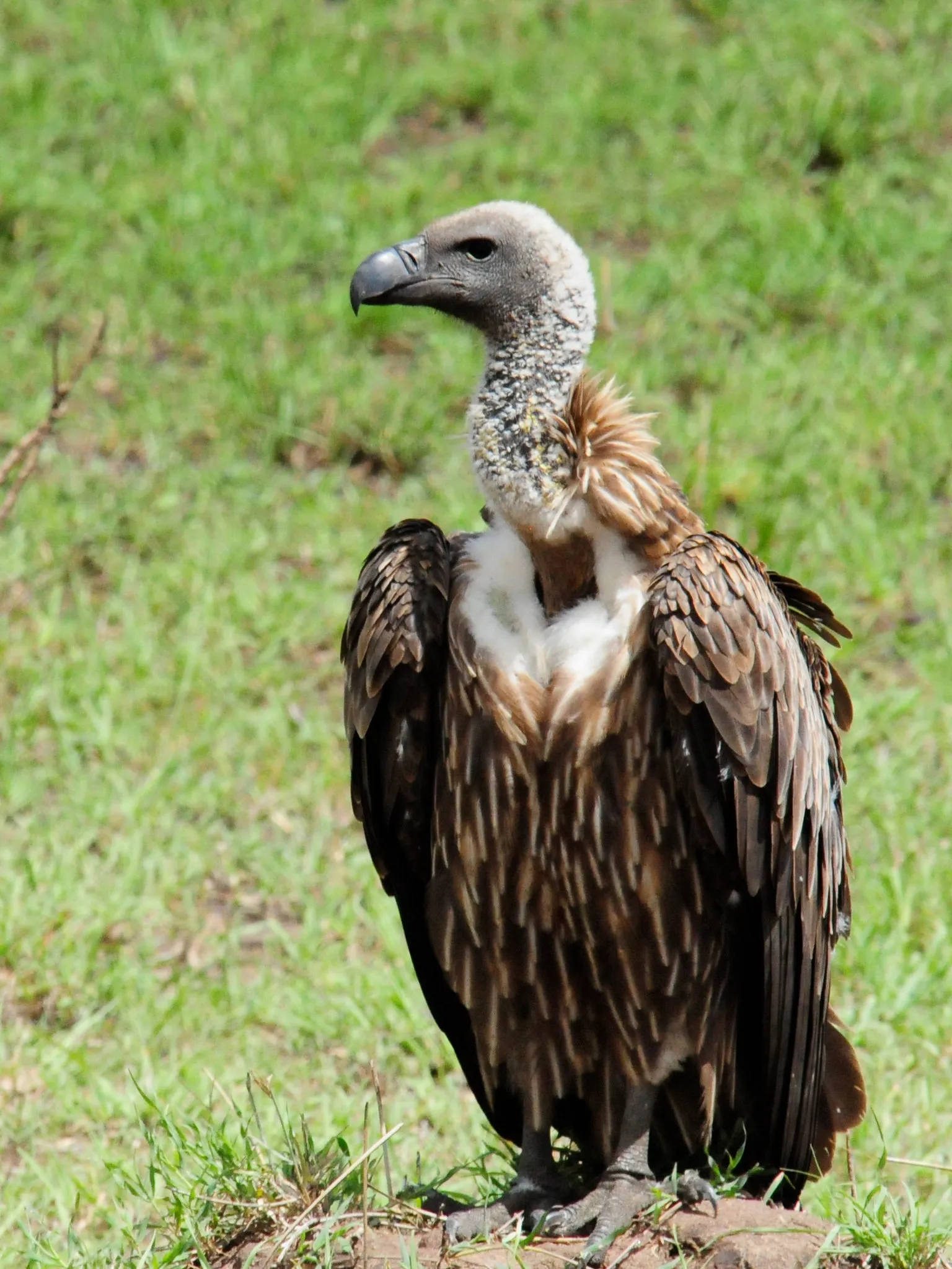
Details: African vultures inhabit a wide range of habitats, including savannas, grasslands, woodlands, and open areas near water sources.
Importance: Their habitat preferences reflect their reliance on open landscapes for foraging and soaring flight.
Ecological Implications: Protecting diverse habitats ensures the availability of suitable foraging grounds and nesting sites for vultures, contributing to their long-term survival and the health of ecosystems they inhabit.
10. Geographic Range and Distribution:
Details: African vultures are distributed across sub-Saharan Africa, with varying ranges depending on the species. They inhabit a wide range of countries, from Senegal and Mauritania in the west to Ethiopia and Somalia in the east, and from South Africa in the south to Chad and Sudan in the north.
Importance: Understanding their distribution helps conservationists target regions for protection and management efforts.
Ecological Implications: The presence of vultures across diverse ecosystems reflects their adaptability to different environmental conditions and highlights their importance in maintaining ecological balance throughout their range.
11. Tracks:
Details: Vultures do not leave distinct tracks like mammals, as they spend most of their time in flight. However, their presence can be inferred from feeding sites and roosting areas where signs of their activity, such as feathers and droppings, may be found.
Importance: Identifying vulture activity helps researchers monitor their movements and assess their impact on local ecosystems.
Ecological Implications: Tracking vulture behavior provides insights into their foraging patterns, habitat preferences, and interactions with other species, which are crucial for understanding their ecological role and implementing effective conservation strategies.
12. Reproduction:
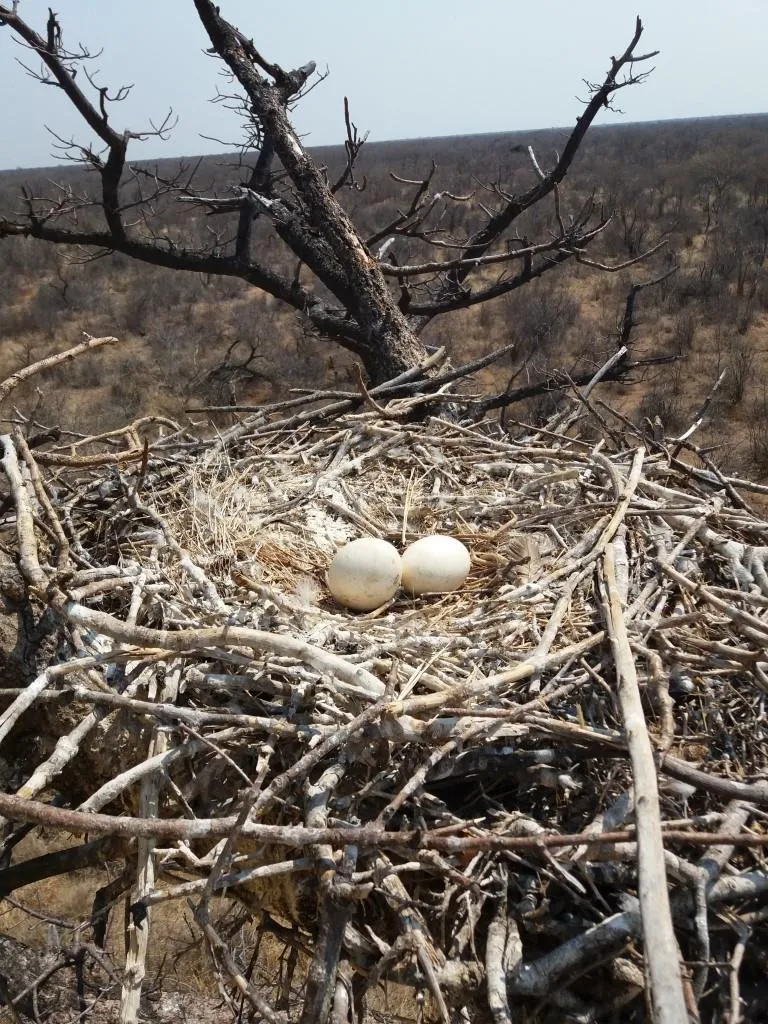
Details: African vultures typically form monogamous breeding pairs and build large stick nests in trees or on cliffs. They lay one to two eggs per clutch, with incubation periods ranging from 50 to 60 days.
Importance: Reproductive success is essential for maintaining vulture populations and ensuring their long-term survival.
Ecological Implications: Studying vulture breeding behavior and reproductive success rates helps identify factors influencing population growth and decline, guiding conservation efforts aimed at protecting nesting sites and reducing threats to breeding success.
13. Lifespan:
Details: African vultures have varying lifespans depending on factors such as species, environmental conditions, and human-induced threats. In the wild, they can live up to 20 to 30 years, while individuals in captivity may live longer.
Importance: Understanding vulture lifespan helps researchers assess population dynamics and evaluate the effectiveness of conservation measures over time.
Ecological Implications: Long lifespans contribute to the stability of vulture populations and their ability to adapt to changing environmental conditions, highlighting the importance of protecting these species for the health of ecosystems they inhabit.
14. Major Adaptations:
Details: African vultures have several adaptations that enable them to thrive as scavengers, including keen eyesight for locating carrion from great distances, a featherless head and neck to prevent bacterial buildup when feeding inside carcasses, and a specialized digestive system capable of breaking down bacteria and toxins present in decaying flesh.
Importance: These adaptations allow vultures to exploit carrion as a food source efficiently and play a critical role in ecosystem health.
Ecological Implications: Vultures’ unique adaptations contribute to the efficient removal of carrion from the environment, reducing disease transmission and maintaining ecological balance.
15. Conservation Status:
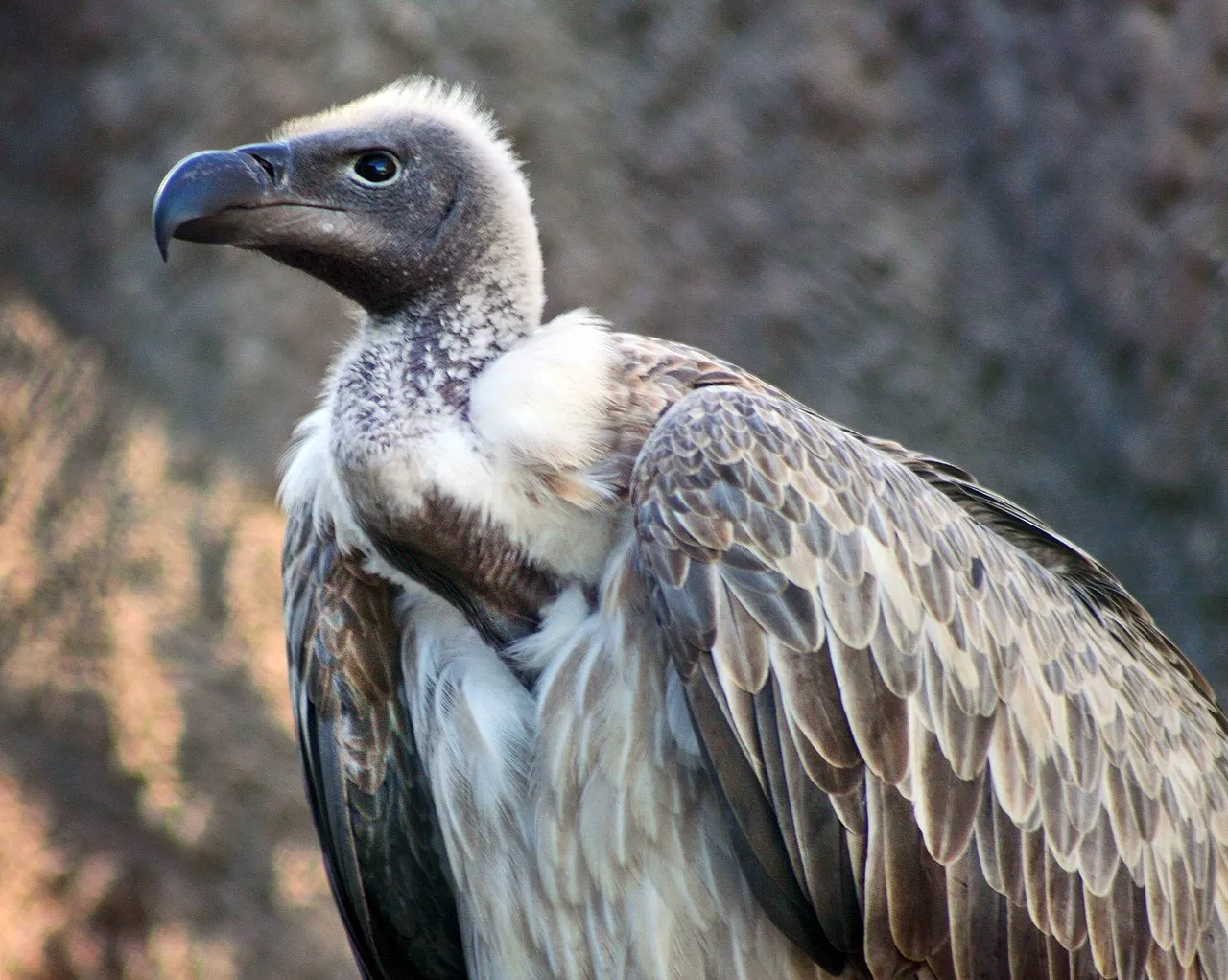
Details: Many African vulture species are facing significant population declines due to habitat loss, poisoning, electrocution, and collisions with infrastructure. As a result, several species are listed as Endangered or Critically Endangered by the International Union for Conservation of Nature (IUCN).
Importance: Recognizing the conservation status of African vultures highlights the urgency of implementing measures to protect and conserve these species.
Ecological Implications: Preserving vulture populations is crucial for maintaining healthy ecosystems, as they play a vital role in controlling disease spread and maintaining ecological balance through scavenging.
16. Domestication and Suitability as a Pet:
Details: African vultures are wild birds and are not suitable for domestication or as pets. They have specialized dietary and environmental requirements that cannot be met in a domestic setting.
Importance: Keeping vultures as pets is illegal and unethical, as it disrupts natural ecosystems and endangers wild populations.
Ecological Implications: Protecting vultures in their natural habitat is essential for preserving their ecological role as scavengers and maintaining the health and balance of ecosystems.
*African Vultures: Overview and Summary
Scientific Classification:
Kingdom: Animalia
Phylum: Chordata
Class: Aves
Order: Accipitriformes
Family: Accipitridae
Genus: Gyps (for most African vulture species)
Species: Various, including Gyps africanus, Gyps rueppelli, Gyps coprotheres, etc.
Subspecies:
Variation reflects adaptability and genetic diversity within vulture populations.
Important for conservation efforts to target specific populations.
Size and Weight:
Wingspans range from 1.8 to 3 meters, weights from 2 to 10 kilograms.
Crucial for efficient soaring flight and scavenging abilities.
Appearance and Identification:
Dark plumage, featherless heads and necks, hooked beaks, and grasping talons.
Aid in easy identification and distinction from other bird species.
Dentition and Bite Force:
Sharp, hooked beaks for tearing flesh; moderate bite force.
Sufficient for accessing carrion and breaking through tough hides.
Diet:
Obligate scavengers feeding primarily on carrion.
Prevents disease spread and maintains ecological balance.
Behavior:
Cooperative foraging behavior; rely on social cues to find food.
Maximizes feeding opportunities and reduces competition among scavengers.
Sounds/Vocalization:
Generally silent except during interactions and communication.
Vocalizations used for social interactions and maintaining dominance.
Habitat:
Inhabit a wide range of habitats, including savannas, grasslands, and woodlands.
Depend on open landscapes for foraging and soaring flight.
Geographic Range and Distribution:
Distributed across sub-Saharan Africa, with varying ranges depending on species.
Understanding distribution aids conservation efforts.
Tracks:
Leave signs of activity at feeding sites and roosting areas.
Help monitor movements and assess impact on ecosystems.
Reproduction:
Form monogamous breeding pairs; lay one to two eggs per clutch.
Essential for maintaining population growth and long-term survival.
Lifespan:
Varies depending on species and environmental factors.
Long lifespans contribute to population stability and adaptation.
Major Adaptations:
Keen eyesight, featherless heads, and specialized digestive systems.
Enable efficient scavenging and disease control.
Conservation Status:
Many species facing significant population declines and listed as Endangered or Critically Endangered.
Urgent need for conservation measures to protect vulture populations.
Domestication and Suitability as a Pet:
Not suitable for domestication or as pets; illegal and unethical to keep as pets.
Preserving vultures in their natural habitat is crucial for ecosystem health and balance.
